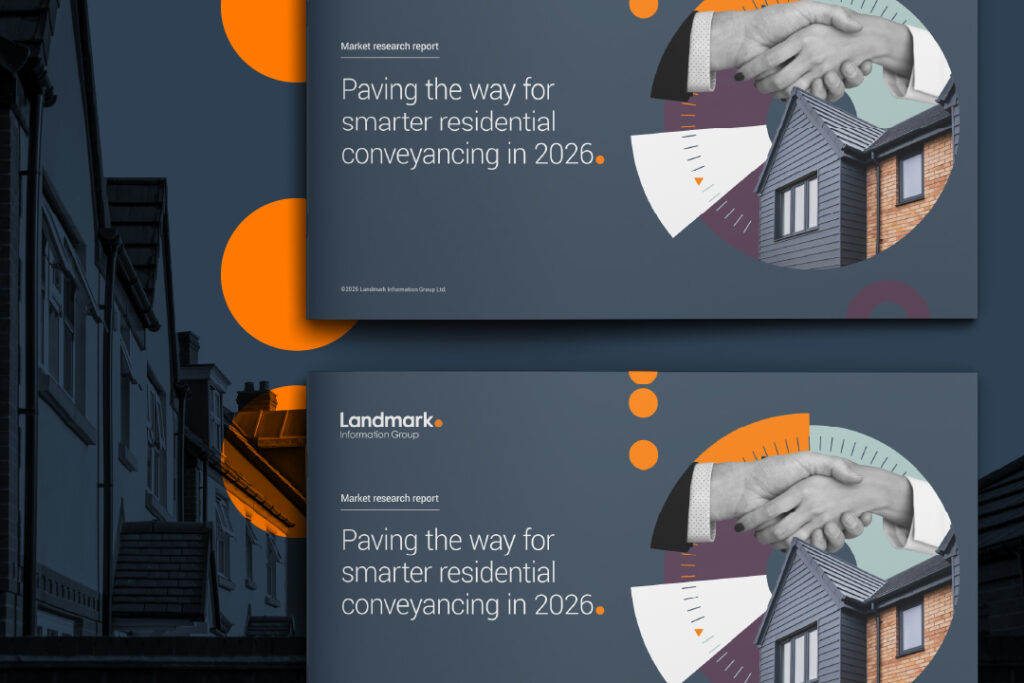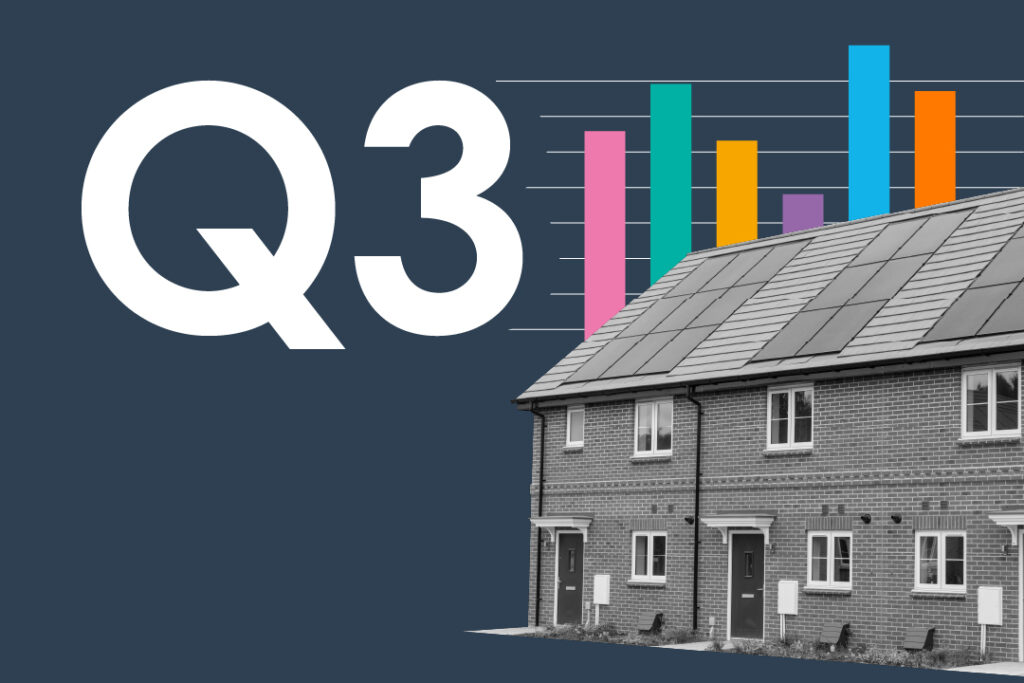
Welcome to the third instalment in our Risk Series, where we examine the top five conveyancing risks in more detail.
Each week we will analyse a different risk, and will discuss further in the Q&A session of our upcoming webinar. Today our focus is on Planning, written by Allie Parsons, Customer Success Consultant at Landmark Information.
Why does Planning matter?
Change is inevitable. We don’t always like it, and some may oppose it. It’s not really being told about the change that should concern us but how we understand it within the bigger picture and whether that change will have an impact, be that good or bad. Ignoring the future to simply focus on what is the here and now doesn’t help. In a planning context, we need to look at all the detail to ensure we are comfortable with the bearing potential change could make.
Change is the law of life. And those who look only to the past and present are certain to miss the future.
John F. Kennedy
Planning is itself a changing beast. The last year created an opportunity for the Government to pursue its desire to update what it sees as out of date, overly complex planning laws, with Covid-19 being the instigator for further development rights to get the economy back on track.
Estimates have put the number of new homes needed in England at up to 345,000 per year (previously quoted of 300,000), considering new household formation and a backlog of existing need for suitable housing. New laws have been laid in Parliament to deliver these new homes as well as revitalise town centres across England and ‘speed up the process’ in doing so. Change is happening.
In April this year, The Ministry of Housing, Communities and Local Government (“MHCLG”) detailed a new set of permitted development rights. The Town and Country Planning (General Permitted Development etc.) (England) (Amendment) Order 2021 came into force on 21 April 2021 introducing a new ‘Class MA’ into the General Permitted Development Order (the “GPDO”) granting deemed planning permission for change of use from commercial and business use (Class E) to Residential (Class C3). This will take effect on 1 August 2021.
The Queens speech 2021, published on 11 May, stated its purpose: ‘to help more people to own their own home whilst enhancing the rights of those who rent. Laws to modernise the planning system, so that more homes can be built, will be brought forward’. (GOV.UK)
A consultation on proposalsfor reform of the planning system in England, which ran from August 2020 to October 2020 is currently being reviewed. The intent is ‘to streamline and modernise the planning process, bring a new focus to design and sustainability, improve the system of developer contributions to infrastructure, and ensure more land is available for development where it is needed’.(GOV.UK)
Of course, there will be those for and against the Government proposals and some with their own ideas of how we amend things, all of which need to be considered in the context of the impact to people and the environment. Whatever the outcome it will mean change.
What does this mean for conveyancers and their homebuyers?
You may wonder whose responsibility it is to look for planning detail – does anyone really want to trudge through numerous applications in case something is changing? Often homebuyers just want the transaction to go through as smoothly and quickly as possible.
As a conveyancer, you may err on the side of caution relying on the seller’s information to understand the proposed purchase property, making sure all work has had permission. Homebuyers, however, have a right to understand any impact, positive or negative, that say a nearby development may have before they commit to a purchase. It is, as we know, one of the biggest purchases we’ll make, so why not investigate thoroughly?
Fruition on applications can take many years, with plans often amended to get them through the final ‘decided/approved’ post. Hence, there is a need surely to uncover past, present, and future plans to understand what’s likely to happen to the area beyond the curtilage of the property purchase. More important is that the extent of any proposed developments is clearly understood regarding any changes that may have an impact on enjoyment or even value. For both parties, surely due diligence is king when it comes to planning.
A preference or indifference to planning proposals in its various forms is very much a personal view. It’s a matter of the detail which is vital to getting what you thought. When deciding that a nearby development with some additional amenities may be ideal for your purposes, you may want to consider the impact that they may have on:
- Infrastructure
- Traffic disruption
- The environment, particularly flooding issues
- What other proposed development is the plan linked to
An example of this is demonstrated in Somerset where it appears the town of Yeovilis expanding out to meet up with what has historically been beautiful rural villages linked mainly by lanes rather than main roads. A scene not dissimilar across the UK.
A particular property for sale (and viewed by a potential homebuyer) sits within a group of 8 properties on the edge of the village, with views over rural land whilst still in a good position to be part of the village and its amenities.
On investigation, they discover that there is one outline application for the erection of up to 185 dwellings. The new development will remove views to North-East, which is one of the selling points of the property. What is almost hidden by the plan and written in small text is that a further application to the West of the development for a further 642 properties has already been approved and will include Infrastructure, access for a local centre and primary school, amendment to link road design, provision of sports and play areas and public open space. The quiet village location suddenly takes a new perspective.
Of course, some may feel this is an exciting and useful addition to the area. Others may see this as not quite the idyllic rural property they were proposing to buy. Conveyancers cannot be expected to know their clients’ views on such matters, so it would be better to find out before completion rather than getting a complaint about misinformation 2 months down the line.
Infrastructure is an important part of development, particularly where an area is proposing growth in population. Not 20 miles from the village mentioned previously, there are plans for yet another new development. The plans, for 252 new homes, may have been accepted by the current residents but the detail reveals that the infrastructure promised in the local plan to support the surrounding properties may now not be included. This is something the residents group feel will have a big impact on the area, claiming that this is a failure and so are opposing the “non-compliance” of the SSDC’s Local Plan. The devil is always in the detail.
Can we avoid missing this information?
In my view there is no reason not to include planning information as part of the required conveyancing searches. Selecting the best one to demonstrate application detail, however, will help avoid missing any key features.
Up until now Planning applications have only ever been displayed as points in planning reports, so there have been questions over data accuracy and the extent of development representation. This then sometimes means a misinterpretation of development scale and size without lots of cross-refencing.
Whilst Landmark still represent the vast majority of small applications by a point, they believe that points are suitable as geo-locators for smaller applications, and now provide data on some of the UK’s large planning applications as polygons (or boundaries).
Where Landmark can supply the polygon data, end users will benefit from a far greater level of insight into the likely extent of some planning applications. This insight increases their understanding of the potential impact, both positive and negative, which the planning application might have on land or property.
The larger the planning application or development, the more practical the use of a polygon or boundary is to locate the site. For example, if a development of 1,000 properties is located as a point, the point could be placed anywhere in the planned development. It could be located some way from the property that your client is buying and not show in a planning report, even if the development is very close to the property. A polygon will show the full extent of the large development and its phases.
The planning polygon dataset is the largest data change in Landmark’s recent history and involved the modification of c. 14 million features. This project was undertaken in the first lockdown months of April to July 2020 and the coverage currently equates to 74% land coverage of England for large planning applications. Converting point to polygon data is an ongoing process so there may be limitations depending on the availability/accessibility of capturing the data, but Landmark continue to work towards increasing land coverage.
The data is unique to Landmark and is available within Landmark Planning, their leading residential planning report as well as Landmark’s all-in-one environmental due-diligence report, RiskView Residential (RVR).
Providing good planning data not only helps conveyancers deliver better insight and due diligence but also make significant time savings. Let’s face it, planning matters. It’s all about change, and change is inevitable.
FREE WEBINAR
How can we make conveyancing more efficient?
Efficient and compliant due diligence has never been more vital to a property transaction. How can we obtain and communicate the key information and risks relevant to the transaction in a faster, more concise manner?
Join OneSearch and Landmark for one of two 30-45 minute sessions to discuss how we can help reduce time spent obtaining and reviewing searches, whilst providing greater risk transparency and saving your client money.
We’d be delighted answer any questions you may have. Please email your questions to intro@onesearchdirect.co.ukin advance and they will be answered during the webinar.
Wednesday Aug 11, 2021 11:00 AM BST
Wednesday Aug 18, 2021 11:00 AM BST
If you cannot make either date, and would like to receive a webinar recording, please click here.
Key References:
https://www.gov.uk/government/speeches/queens-speech-2021
https://www.gov.uk/government/consultations/planning-for-the-future
Related Articles

A Year of Connections: OneSearch and PropertyFace2Face

Paving the way for smarter residential conveyancing in 2026

OneSearch Christmas Opening Times

The Real Cost of Missing Data Pieces (…And How Our Triple Check Fixes It)

Green fields, hidden risks: Why the SiteSolutions Farm report is vital for rural land buyers

The SiteSolutions Residence report: Your key to a safer, smarter property purchase

7 reasons conveyancers choose OneSearch Prime

Landmark residential property trends report Q3 ‘25

The heart of OneSearch: The dedicated team behind our unwavering customer service


